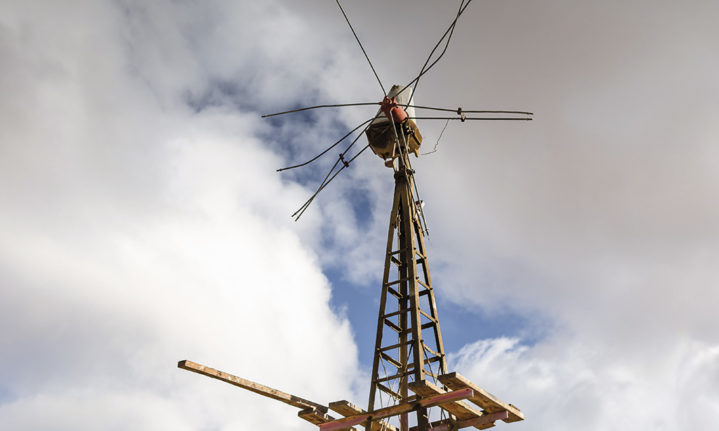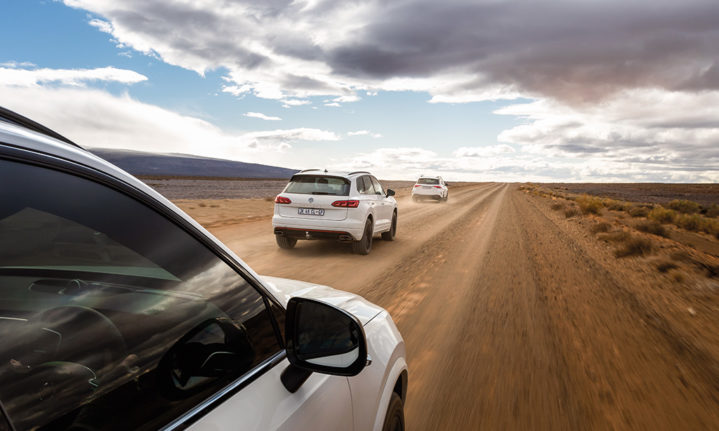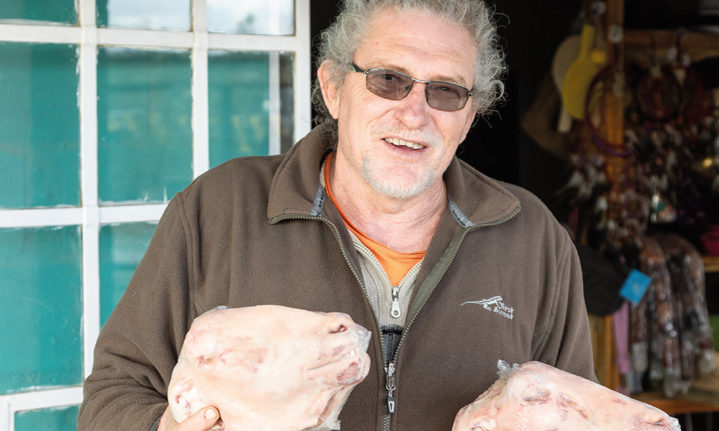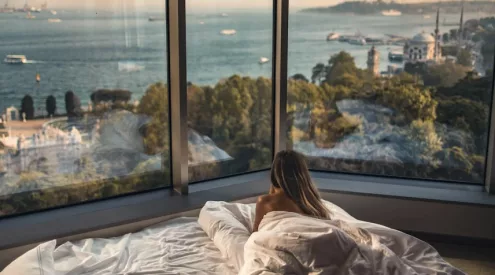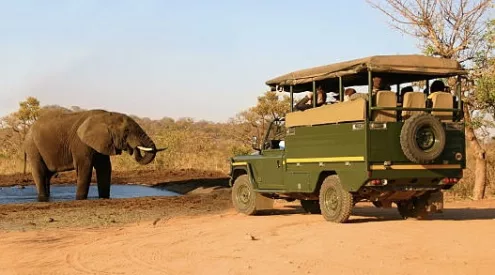Just how far off the beaten track can three standard-issue luxury SUVs go? A stern test spanning 900km of dust, mud and 1400m of elevation change awaits.

At the summit: ’I think I can see my house from here?’ Said no one.
Words Ray Leathern | Photos Peet Mocke
After months of Covid-19 isolation we swapped in for out and embarked on a self-drive adventure to our own special climax of desolation – the Northern Cape’s impressive Ouberg Pass.
Our convoy advances inexorably towards the end goal. Three shimmering, low-flying objects pulling up high-speed dust devils across the Tankwa Karoo. To the west, ominous storm clouds engulf the Cederberg. To the east, the Earth remains unerringly parched, with powerful rising thermals painting telltale stratus clouds across the sky. And then there’s us – three amigos right in the middle of this baking, beautiful and turbulent nowhere. Adventurer John McDouall Stuart once attempted to cross the continent of Australia – no mean feat in an air-conditioned vehicle today, never mind back in the 1800s on horseback – and when he reached the centre of the continent he coined it ‘the very climax of desolation’. I bet he’d identify something similar on the unyielding R355 that connects Ceres with Calvinia, crossing the provincial boundary into the Northern Cape en route.
What was the motive of this journey? After all, nearly every expedition in the vein of a McDouall Stuart started off with some sort of practical purpose – to find a route for a telegraph pole, oil pipeline, to discover gold… After months of Covid-19 isolation we swapped in for out and embarked on a self-drive adventure to our own special climax of desolation – the Northern Cape’s impressive Ouberg Pass – before spending a cosy night in Sutherland. A sub-motive of the trip was to explore the way people will travel in a post-lockdown world. Likewise, getting a handle on which vehicle is best for touring was a worthwhile adjunct.
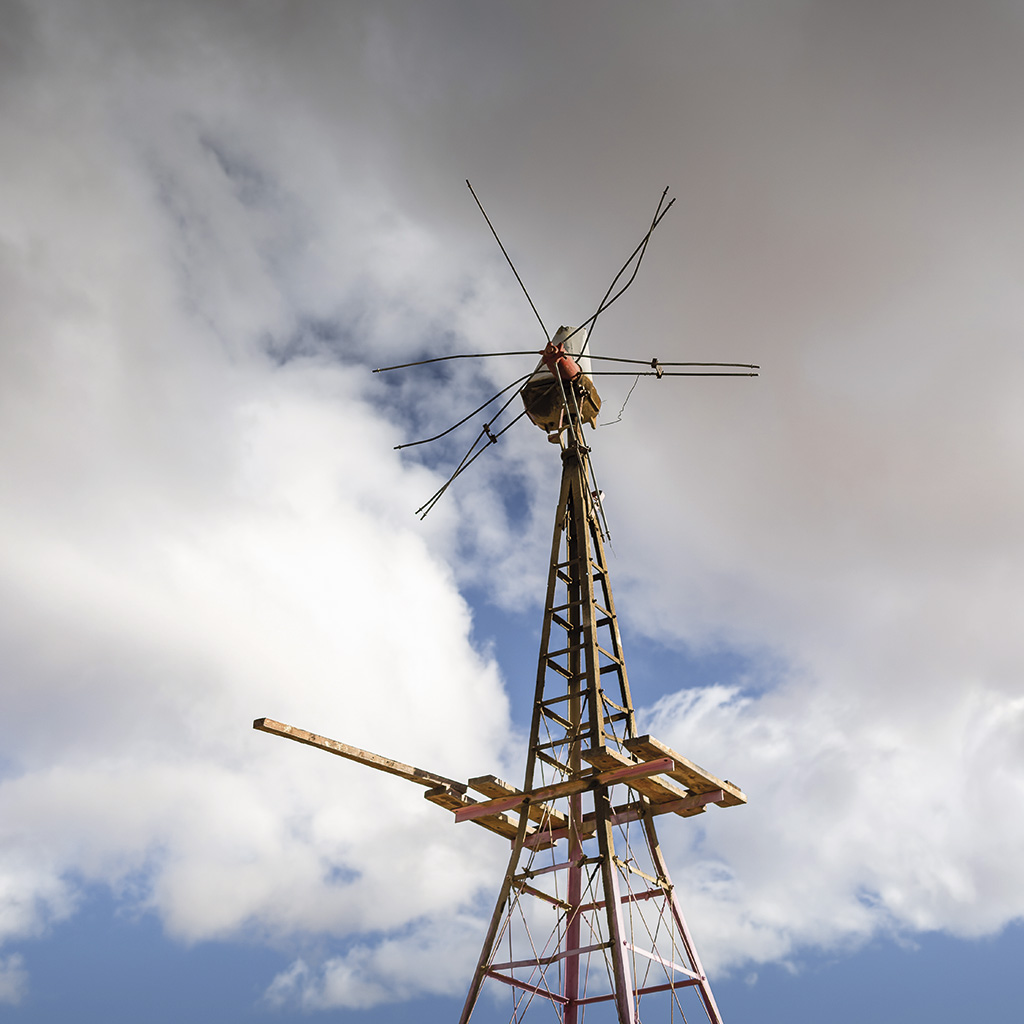
Par for the course for a windmill in these here parts.
Leaving the town of Ceres behind, swapping smooth bitumen for corrugated gravel with a tricky tyre-threatening middle mannetjie should you stray off the line, the landscape became more sparsely vegetated down the R355 and began to feel evermore eerie – as if we were leaving planet Earth behind altogether (along with cell phone reception). It’s impossible to resist the allure of the Tankwa Karoo; impossible not to become transfixed by the sheer emptiness of the place, impossible not to fall in love with the boundless scale of its surroundings. A sparsely populated province without loads of tourists and zero queues at attractions – that’s manna from heaven in 2020.
The virtue of driving through a great deal of emptiness for a long time is that when you do finally come to anything – anything at all – you get disproportionately excited about it. After soaking up hundreds of kilometres of gravel, by mid-afternoon we saw the sign for Middelpos/Sutherland (R354) and Tankwa Karoo National Park. From there it was another 90 kilometres of gravel strafing past Jakkalsfontein before the steep ascent to the summit of Ouberg Pass began. We’d been chasing the sun the whole afternoon hoping to capture magic hour on top of the pass, and knew we were up against it. There’s nothing like a little bit of will-they-won’t-they-make-it intrigue to keep focus.
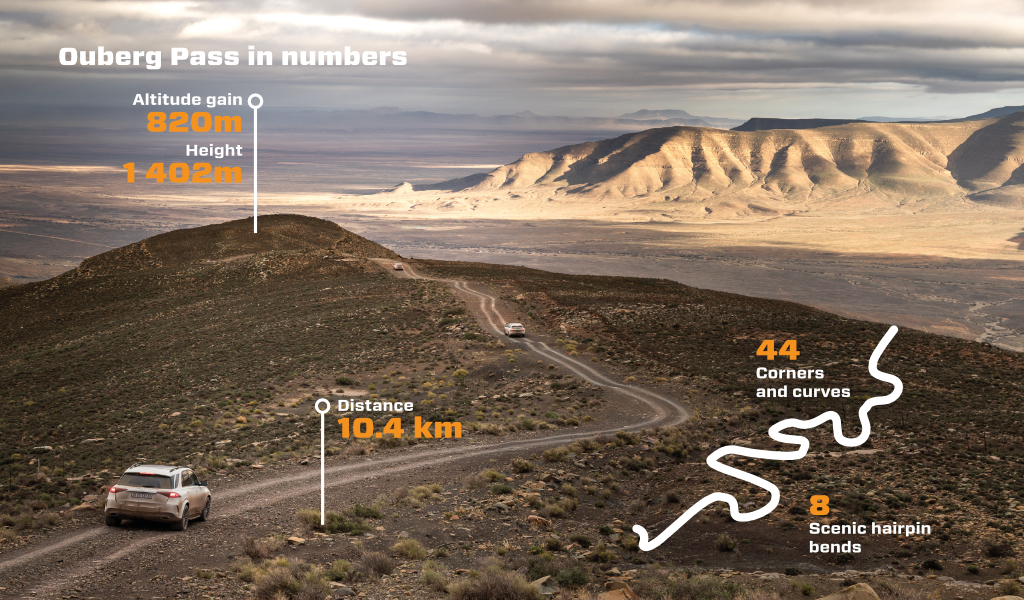
All three vehicles maintained their composure up the Ouberg Pass – even when their drivers didn’t.
The road to the summit was as demanding as anything, and not one we wanted to rush and take liberties with in our R1 million+ vehicles. There’s a top layer of hard sunbaked dirt, wrenching the steering wheel this way and that in the palm of your hand. Other sections are unstable, muddy and churned-up from the moisture of previous snow falls. And of course, there’s the ever-present danger of sharp shale-like rocks to tear expensive tyres to shreds.
Thanks to generous clearances and clever touch-of-a-button, four-wheel-drive and suspension systems, the vehicles adapted to the prevailing terrain. Until, suddenly emerging from the shadowy ridges of the Roggeveld Mountains, our convoy peaked into golden sunlight and we were there. The summit – the end goal we’d been shooting for all journey. The Ouberg Pass atop the Karoo plateau is a place of tantalising inaccessibility, a glorious standalone in the boundless emptiness. There was nothing left to do but find an appropriate clearing, park up, leap from the car and try in vain to capture the never-ending vastness of the Tankwa Karoo valley below. Our formerly white vehicles were now wearing a beige-brown camouflage of dust and mud, like a badge of honour.
The vehicle verdict

The Mercedes-Benz GLE 400d 4Matic, has a monstrous V6 diesel engine and was by far and away the fastest and most opulent of the three vehicles – Lewis Hamilton on safari, with all the bling and swagger to match. It had the worst wheel travel though and its 21-inch wheels and tyres didn’t much enjoy the roughness of the Tankwa.
True to form, the Volvo XC90 D5 R-Design was the safe and sensible Swede, but I suspect the boffins from Gothenburg who put it together haven’t encountered a route as tough as Ouberg. It handled it just fine, displaying impressive wheel travel and off-road agility, but played the drama llama, constantly freaking out with low-tyre-pressure warnings.
The Volkswagen Touareg V6 TDI Executive has too many vowels in its name, and the Black Style Package looks a bit odd – as if the grille has been replaced with a generic off-the-shelf part, and the digital infotainment system borders on unfathomable. However, it made light work of the route, like it was merely drumming its fingers in boredom while the others two were strained to their limit. It proved to be the undisputed adventure mobile on this journey.
Wide ‘smilies’ at Tankwa Padstal

No weary traveller shall pass without a visit to the renowned Tankwa Padstal. ‘A little bit of everything and a lot of something in the middle of nowhere,’ as it’s billed on social media. The road-side farm stall resembles an oasis as it hoves into view and it’s exceptional, especially the fan-favourite moer-koffie and roosterkoek burgers. Owner Hein Lange, greeted us with a well-meaning smile and two frozen sheep’s heads. Perhaps phishing for a sale, he explained the lengths he goes to get them looking their best. ‘I even brush their teeth,’ he said proudly. Hein and his wife established the padstal in 2011 and over coffee he described how it’s become a beacon for the community, particularly during coronavirus. ‘Most schools offer online classes, but what about kids in outlying communities? There’s no over-the-air school in the Tankwa. That’s why we’ve built the library .’
Stay Here

Blue Moon Guesthouse
The Blue Moon Guesthouse offers slow-town charm in Sutherland. Five rooms with en-suite bathrooms sleep 10 in total, with a central lounge and dining room, making it perfect for families or bigger groups. There’s complimentary Wi-Fi, tea and coffee-making facilities and breakfast is offered. Knowing we’d arrive after dark and depart again before breakfast, owners Johann and Roelien went out of their way to deliver dinner to the guesthouse and prepare breakfast packs for us the next morning. R450 pp sharing (or R550 single); 14 Primrose Street, Sutherland, 082 962 0416 /082 804 3060.










